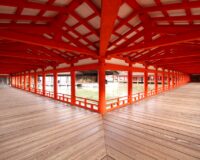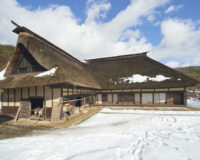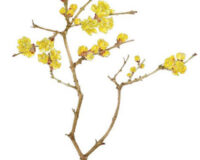

Dogs are thought to have accompanied humans to the Japanese isles during the Jōmon Period, traditionally dated between around 14,000 and 300 BCE. Japan’s geographical isolation and the fact that breeding was left up to nature mean that Japanese dogs today remain very similar to their Jōmon Period ancestors. Until comparatively recently in Japan, dogs were left pretty much to their own devices when it came to breeding, with little human interference in terms of selection. Japan’s dogs were largely shaped by their local terrain, as only those best adapted to this land of mountains and swift-running rivers survived to leave progeny.
In this series we explore the origins of the six native dog breeds that have been declared natural monuments in Japan – the Hokkaido-inu, the Akita-inu, the Shiba-inu (also called Shiba-ken), the Kai-ken, the Kishū-inu, and the Shikoku-inu.
Text and Photos : 舟橋 愛 Ai Funahashi / English Version : Judy Evans
Keyword : Japanese Dog / Natural Monument / Ainu / Hokkaido Dog / Hokkaido Inu
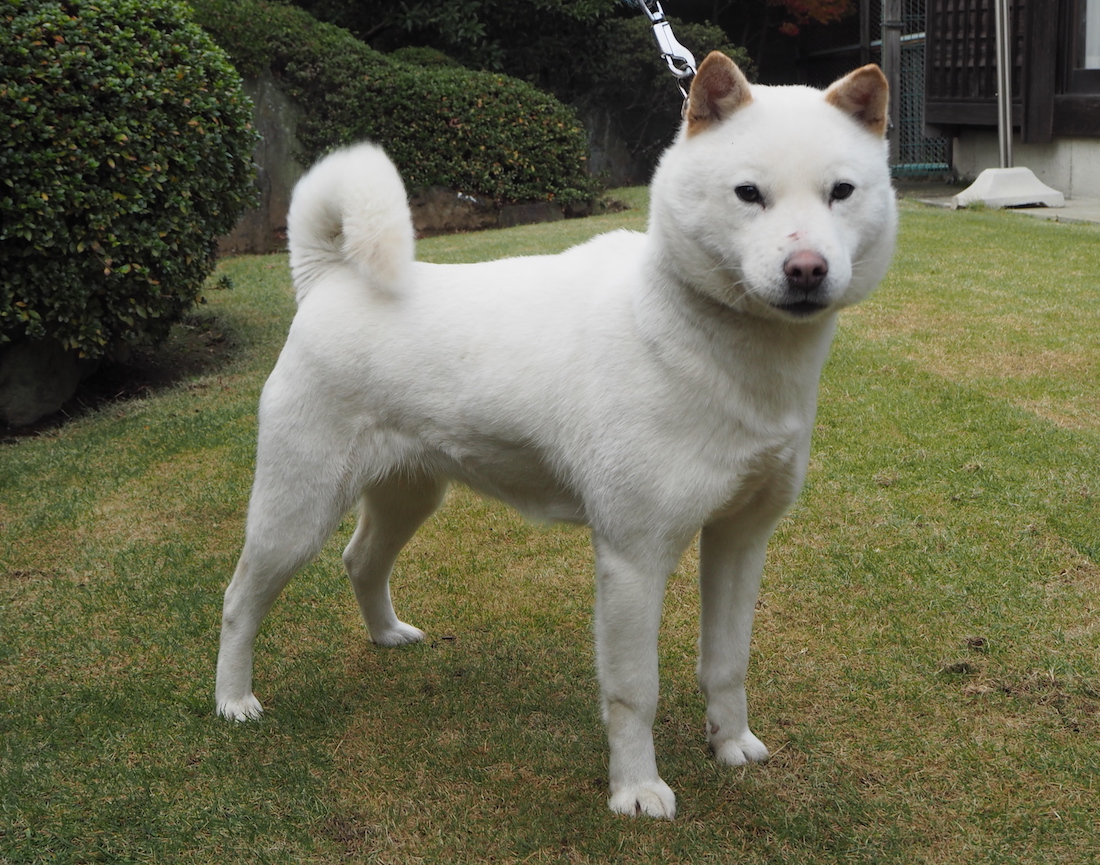
Hokkaido Dog Crucial to the Ainu Culture for Bear and Deer Hunting
The third article in our series on Japanese dogs shines the spotlight on the Hokkaido-inu, a breed that originates further north than any of the other Japanese dog breeds. The Hokkaido-inu was designated as a natural monument in December of 1937. As of writing (2020), it is the last of Japan’s native dog breeds to have been designated as such. In the isolated but naturally rich northern land of Hokkaido, they once played a vital role as watchdogs and hunting dogs for the indigenous Ainu people. In fact, the breed was widely referred to as the “Ainu dog” up until their designation as natural monument, when the name Hokkaido-inu was made official.
Uniquely, this breed was the only one of the native Japanese dog breeds to have been named after a people. The other five Japanese dog breeds (the other six if you include the now-extinct Koshi no Inu) are either named after their place of origin or, in the case of the Shiba-Inu, after a physical characteristic. (The exact origins of the term “Shiba” are unknown, but it likely either refers to the small stature of the breed, or to its brown colour.)
It is possible that the dogs the Ainu people depended on for their hunting way of life caught the eye of newcomers from Honshū who arrived while Hokkaidō was being opened up for development. Noticing that these dogs were distinct from other dogs in Hokkaido, they began referring to these particular hunting dogs as “Ainu dogs”.
Perfectly Adapted to Life in the Icy North
Although the Hokkaido-inu falls into the medium-sized dog category, it is strong and robust. A broad chest allows it to force its way through deep snow in pursuit of its prey, and its thick, double coat allows it to withstand temperatures of 20 to 30 degrees below freezing. The Hokkaido-inu can even sleep buried under the snow! These dogs have powerful jaws and are used to hunt everything from birds to bears. However, those wanting to hunt birds for mounted specimens, are apparently advised not to go hunting with a Hokkaido-inu because the bird will end up full of holes! Every aspect of the Hokkaido-inu’s physique, honed to suit its harsh environment, sets it apart from ordinary household pets.
Several remarkable anecdotes attesting to the intelligence of the Hokkaido dog are recounted in the book “Tennen Kinen Butsu Hokkaido-Inu (Natural Monument Hokkaido Dog)”, published by the Hokkaido Dog Preservation Society. One such story tells of how a dog from an Ainu village used to plunge its head into the river to retrieve shellfish. The dog would then lay them out on the riverbank waiting for them to open, so that it could eat the contents. During the pre-World War II years, pet merchants from the mainland swarmed into Hokkaido to buy up as many of these dogs as they could find. As understandable as such enthusiasm may be, this was one factor that lead to a decimation of breed numbers.
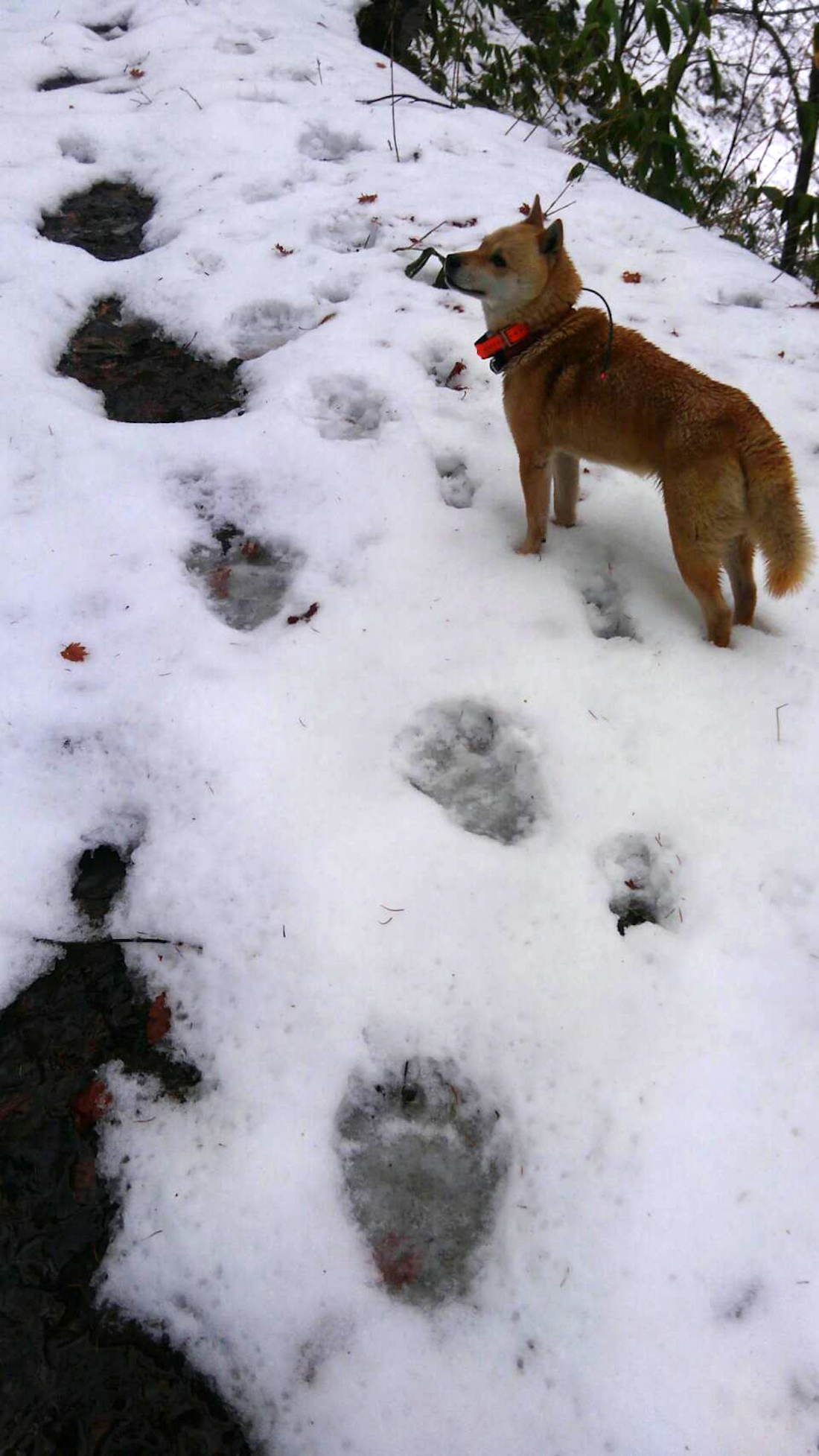
A Vital Part of Ainu Hunting Culture
No discussion of the Hokkaido-inu can be considered without some mention of the history and culture of the indigenous Ainu people.
The Ainu once lived all across Hokkaido, forming settlements known as “kotan”, made up of several to several dozen related families. Each kotan maintained hunting and food-gathering grounds within a designated area, and there was very little mixing between groups. This reluctance to mix with outsiders, coupled with the challenges of travelling across long distances across challenging terrain in the past, meant that each kotan was very much like its own small, independent nation.
Hunting and gathering were important sources of sustenance for the Ainu. The main prey for hunters was large animals such as brown bears and Hokkaido sika deer. With no access to firearms, the Ainu hunted mainly with bow and arrow. Given this, and the fact that the Ainu targeted such strong and quick-witted wild animals, it is easy to see why they would have developed superb hunting dogs.
Each Settlement Maintained its Own Outstanding Canine Bloodline
Each kotan had its own superior canine bloodlines, resulting from years of crossbreeding close relatives. This in turn resulted in distinctive regional characteristics within the Hokkaido-inu breed. Denbō Kan’ichi was an early advocate for the preservation of the Hokkaido-inu and founder of the Ainu Dog Preservation Society in the 1930s. He classified the Hokkaido breed, based on their regional differences into the following bloodlines: Chitose-kei, Akan-kei, Hidaka-kei, Iwamizawa-kei, Atsuma-kei, and Oshima-kei.
Sadly, over 30,000 dogs in Hokkaido alone were killed during the Second World War to supply furs and skins to the military. This had a drastic effect on Hokkaido dog numbers and only the Chitose bloodline has survived to the present day. However, the distinctive brindle coat of the Atsuma bloodline is a trait that has survived and can still be seen in many Hokkaido-inu today.

Visiting a Hokkaido Chitose-Kei Breeder
I visited Saihoku Inoue Kennels in Saitama Prefecture, where owner Inoue Kiyoshi is devoted to the preservation of the precious Chitose bloodline. He has seven Hokkaido dogs, all Chitose-kei. Inoue san has been a dog lover since childhood. He has owned a variety of breeds including Spitzes, Boxers and German Shepherds. At one point, when he was without a dog, he met a veteran Hokkaido breeder and decided to keep a white female Hokkaido-inu. When this dog unexpectedly placed first in a Hokkaido Dog Preservation Society dog show, Inoue san was hooked.
He has focused on breeding and maintaining the pedigree Chitose line ever since managing to obtain a pure-bred Chitose-kei dog from Aomori Prefecture.
Overall there are around 5,100 Hokkaido dogs registered with the Hokkaido Dog Preservation Society, but almost all of these dogs are from mixed Hokkaido-inu bloodlines. According to Kobayashi Yasuo of the Hokkaido Dog Preservation Society (also known as the Dōken Hozonkai), who was visiting on the same day as me, there are worryingly few Chitose-kei dogs left. Only 175 were registered as of December 2019—far fewer than I would have expected.
“In order to maintain the pure Chitose bloodline, we can only breed from Chitose-kei dogs. The small numbers make this really challenging”, says Kobayashi san. “Inoue san here is the only breeder in the Kanto region with this many Chitose-kei dogs.”
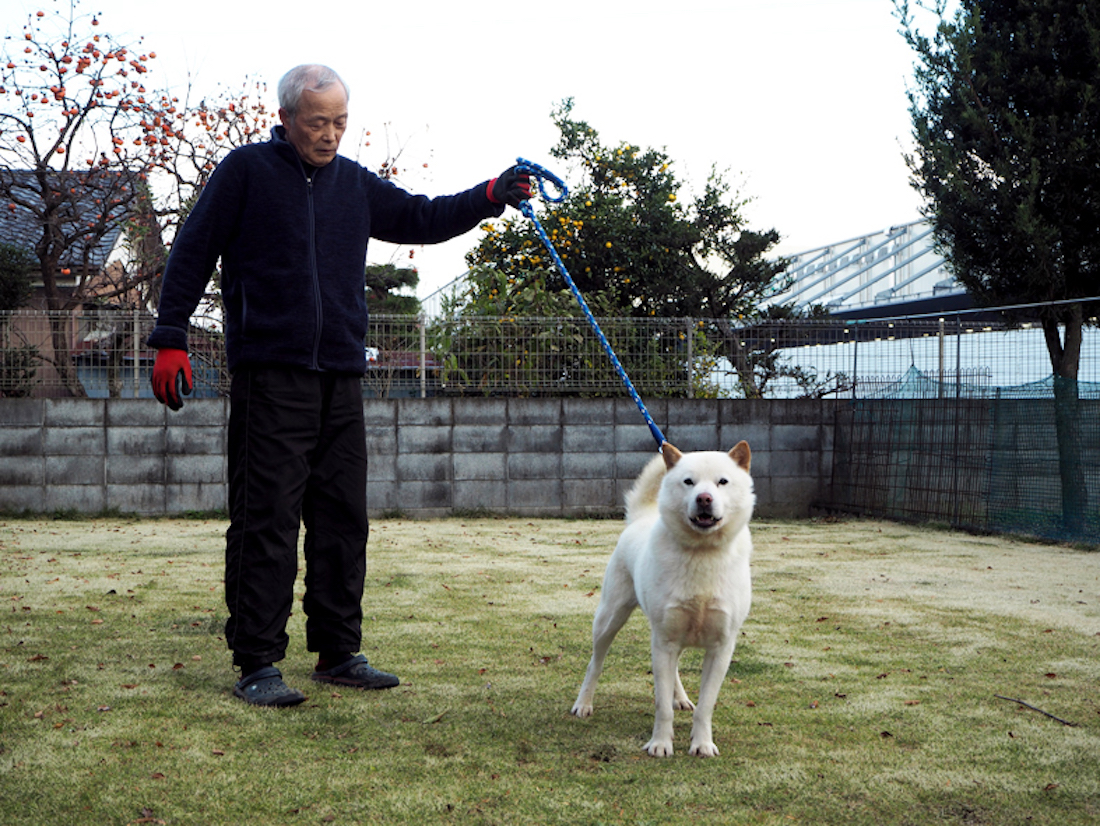
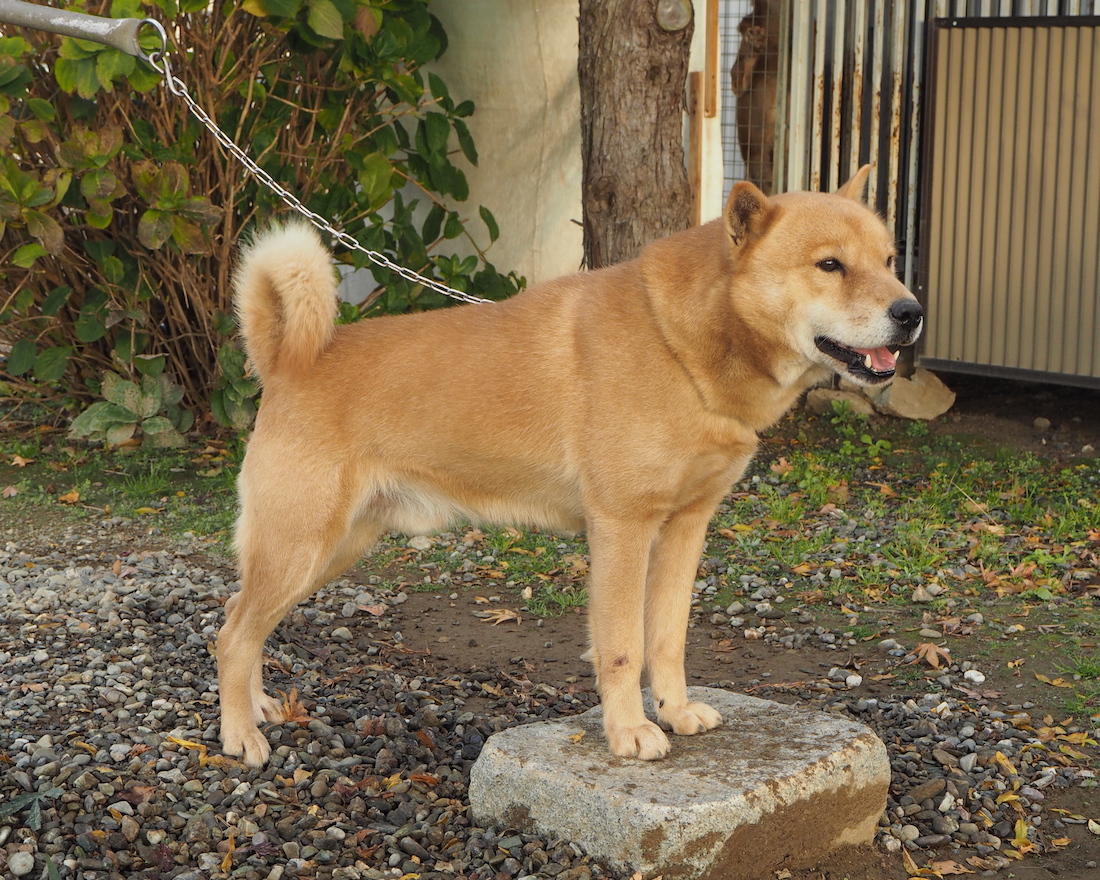
The old documents about the Chitose bloodline that Inoue san lent me described a population of dogs from the area of Rankoshi in rural Chitose, Hokkaido. The names of these dogs include Aka-gō, Aku-gō, Ryū-gō, Jirō-gō, Pirika-gō and Shū-gō. The document describes them thus: “Forehead wide. Cheeks well developed. Ears good. Muscular and compact. Ligaments strong. Movements nimble. Some dogs with low bone density. Hairs of outer coat stiff and strong. Inner coat not necessarily dense”.
The dogs Aka-gō and Aku-gō, mentioned in this document, were father and son. Aku-gō was a renowned champion who appeared in magazines throughout the pre-war and post-war periods. A great bear-hunting dog, Aku-gō cut an imposing figure into old age. His presence even caused visitors to unconsciously take a step back when he would quietly emerge from his kennel.
Inoue san ensures the continuation of Aku-gō’s Chitose bloodline through a system of careful breeding.
Challenges to the Preservation of the Breed
The Hokkaido-inu perhaps became best known to Japanese audiences through a long-running series of mobile phone commercials. The character of “Otōsan” in these popular commercials was initially played by Hokkaido dog Kai-kun until his death of old-age in 2018, then subsequently by his sons, Kaito and Kaiki. It is uncertain, however, if this exposure has really raised the profile of the breed itself, and numbers do appear to be dwindling. The Hokkaido Dog Preservation Society (also known as Dōken Hozonkai) was founded in 1951 and at one point had as many as 20,000 Hokkaido dogs registered. However, that number has fallen to around 5,000 dogs currently.
Inoue san is concerned for the future viability of the breed, saying that some people are now referring to the Hokkaido dog as an “endangered species”. He says that people considering getting a Japanese dog as a pet tend first to go for the popular Shiba-inu. Then, if not a Shiba, they might consider the Kishū-ken, Kai-ken or Shikoku-ken—dogs that can be easily obtained from around the main population areas in Honshu—rather than a dog from Hokkaido, which seems seems a bit far away to many.
Kobayashi san tells me that members of the Hokkaido Dog Preservation Society are themselves concerned about the advancing age and dwindling numbers of their membership. Of particular concern is the fact that show judges are getting older.
Does the Hokkaido-Inu Make a Good Pet?
Simply being designated as a natural monument does not guarantee the future survival of the breed. After all, the extinct Koshi no inu died out after being declared a natural monument. But, is distance the only factor in the dwindling numbers of this breed? Or, could their suitability as pets have something to do with it?
Inoue san and Kobayashi san were quick to counter this question and extol the virtues of the breed. “Not at all”, they said. “Hokkaido dogs are really loveable and they adore living with a family. They’ll follow you around and even curl up on your lap! They’re easy to train, even as adult dogs, and they make great watch dogs—they can tell the difference between visitors and passers-by, and will let you know that someone’s coming to the house, even before the doorbell rings!”
Finding Out More About the Hokkaido-Inu
Traces of a past life in various far-flung Ainu settlements are echoed in the variety in coat colouration of the Hokkaido-inu, their devotion to family and their careful appraisal of strangers. I’m sure many dog lovers, after having read this article, will now be curious to see one of these dogs “in person”.
The Hokkaido Dog Preservation Society headquarters holds shows in Hokkaido three times a year. In addition, branch shows are held all around the country as well. Emphasising the value of these dogs as a hunting breed is an important part of each show. They are judged on how they run, with rankings rapidly changing with each new competitor. Some shows also include an event where the dogs face off against a caged bear and are judged on how intimidatingly they behave towards the bear.
Anyone interested in attending one of these shows can find out more from the Dōken Hozonkai website (in Japanese): https://doukenpo.com/
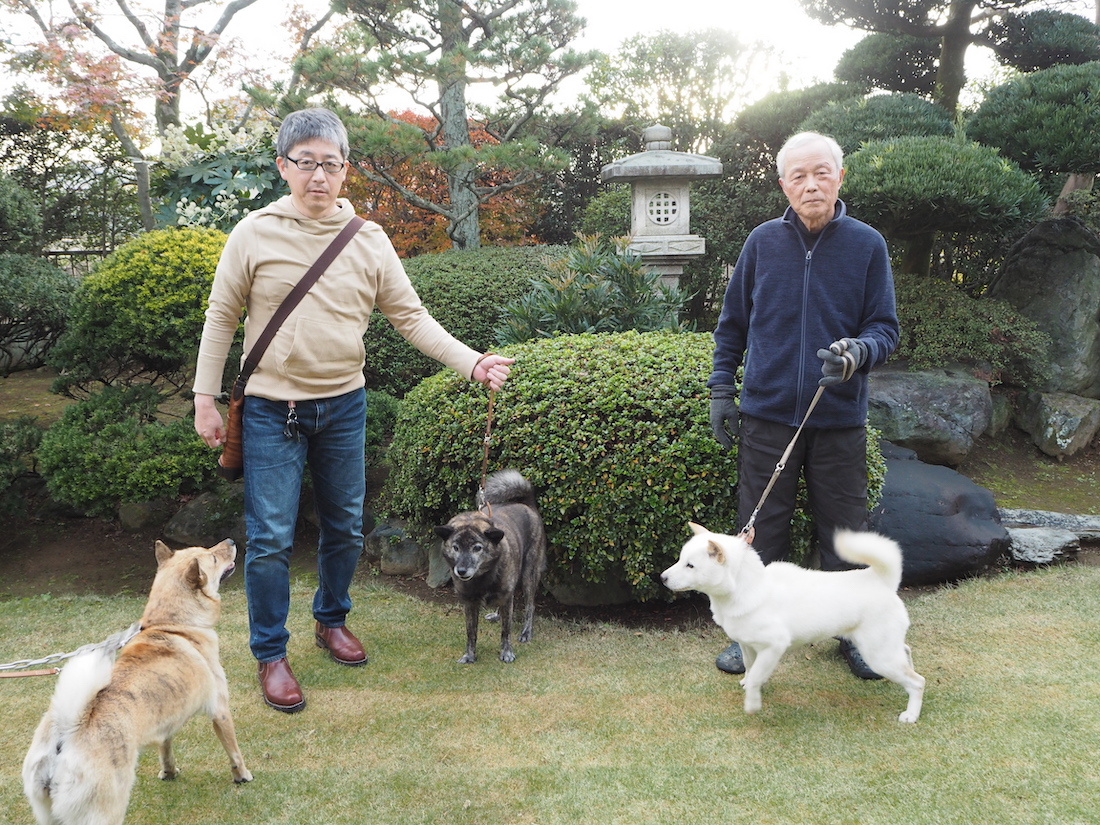
Thanks to:
Natural Monument Hokkaido Inu Preservation Society (Dōkenpo)
https://doukenpo.com/
Saihoku Inoue Kennels (090-2327-3901)



